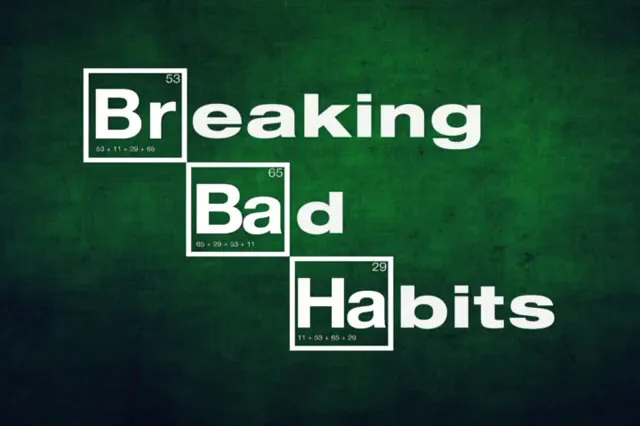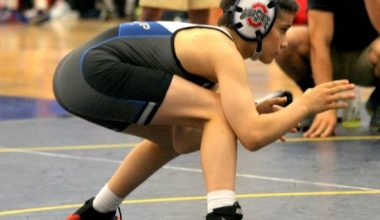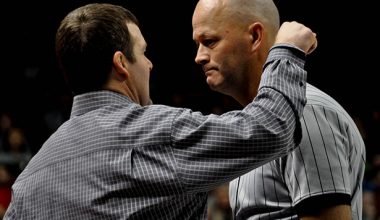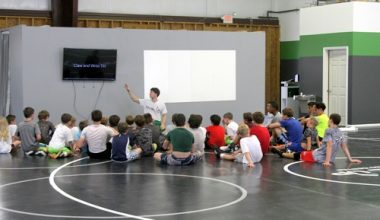One of the hardest things as a coach is breaking a wrestler’s bad habits.
They are usually formed from years of them not being addressed, a natural tendency based on their body mechanics, or the wrestler just needs to learn how to increase their level of effort.
Wherever it came from, it’s now your responsibility to help them fix it and create new habits. Bad wrestling habits can come in a few forms:
- Technique habits – There are tons of these and are the most common. Examples are shooting with their head down, reaching when they make contact, or not stuffing the head on a sprawl.
- Reinforced habits – That chin whip worked one time and was much easier than sprawling so now, of course, they don’t sprawl correctly.
- Natural habits – Maybe they were never taught how to keep their hips low and chase the leg on a go behind so instinctively their butt is in the air leading to the opponent catching their leg.
- Effort habits – This could be a conscious lack of effort like not doing a full push up or breaking away lazily when drilling a stand up. Or maybe they picked up bad habits to make things easier (like finishing a double toward their head instead of turning the corner).
- Practice habits – Common bad drilling habits include being out of their stance and reaching before hitting the next rep, laying on their back after getting taken down, or tapping on their back during live without trying to fight. These bad habits will show up in matches…it all matters.
Wherever they picked up the bad habit, we’re here now, so let’s fix it.
Tips for Breaking Bad Wrestling Habits
Here are a few methods I’ve used successfully over the years:
Find the root cause
One thing like head position or foot placement may be throwing it all off. But also ask why…WHY are they shooting with their head down? Is it an issue with their stance being too far forward on their toes? Is it psychological and they subconsciously want to protect their face?
Extra tip: Video them – I’ve had great luck recording a wrestler in practice and playing it back so they could see what was going on
Isolate the issue
Once you find the cause, isolate drilling only that small part first. You can create micro drills that can be done before and after practice. Once they are getting that part down, add it back into the full technical skill to drill it together.
Replace a bad habit with a good one
Tell them to do it wrong. They will look at you funny, but yes. Tell them to do it the wrong way and have them do a few reps using their bad habits so their brain associates that with “bad”. Then have them do it the right way and reinforce it with praise.
Replace the response
Their habit may also be the result of reacting to what the other person is doing. For example, “when they snap me down, I have a bad habit of reaching out to their legs.”
Replace reaching out with walking their feet under their body to improve their position and isolate this as a drill. Their brain will now make a new association with the correct response.
Reps and reps…but the right kind of reps
As most coaches know, it takes lots and lots of reps to create a habit. It takes even more to fix a bad one. One of my best wrestlers had a bad habit of turning her foot the wrong way on a sprawl, leading to an imbalance. I had her do a sprawl shadow drill before and after every practice for three weeks focusing only on that and the angle of the sprawl.
But drilling is not the same pace as a match, so we also isolated someone shooting when she was just standing in a stance to improve reaction time and also increased the resistance as we went…slow drill –> hard drill –> spar 50% –> spar 75% –> then live situations.
Get them tired, then do reps
Bad habits tend to slip back when they are tired in a match. Have them get reps both when fresh and exhausted.
Incentives
Sometimes a little incentive can provide extra motivation to fix a bad habit. Praise or a reward for doing it right, maybe a few push ups if they do it wrong.
This isn’t about “punishing” them or yelling at them for executing technique the wrong way. They are trying to do it right and being an A-hole will actually demotivate them. But if they know you are trying to help them break the habit, incentives can work.
Sometimes it has to sting to make a change
Maybe they just can’t help themselves to hit that chin whip, but when they lose a big match because of it they will want to fix the habit. Even though you’ve been telling them to stop forcing it, this pain of losing can be the catalyst for change.
Stay patient
Make sure they (and you) stay patient and not get frustrated when a bad habit creeps up again. After all…it was a habit. Expect it to happen and just keep plugging away at getting isolated reps.
Or maybe re-assess what’s going on and dig deeper into the root causes of why it’s happening. Either way, it will take time. It used to be said that it takes 21 days to make a new habit, but new studies are saying it takes as much as 51-70 days.
Preventing bad habits in the first place
While this article is more about how to break a habit once it becomes ingrained, you will have more control as a coach if you can create good habits in the first place. Here are a few tips:
- Focus on good position first – Don’t rush into showing moves. Take your time to make sure they understand and utilize drills that teach them what it means to be in good position.
- Isolate micro drills – When first teaching position and technique, break things down into smaller parts that are easier to learn and create good habits.
- Tell them where they will mess up – As you are teaching a technique, explain to them the common spots they will have problems with and where bad habits can occur. I do this all the time. “So look, you are going to want to drive them over too fast with your half. This is normal. Take a sec to drop your elbow and scoop the head first”.
- Build their tolerance level for doing hard things – The human brain will often do what it can to protect itself from discomfort. As a coach, you need to help kids learn how to keep expanding their comfort zone so that a lack of effort doesn’t cause bad habits to form.
- Make sure the partner gives the right feel – If the partner is out of position or there isn’t enough resistance when drilling, bad habits can begin.
- Positive reinforcement – While your praise is part of it, finding success is the best way to reinforce a good habit. Create live situations where they start with the position, give incentives for hitting the move or hold off on showing the defense for a week so they learn what success feels like.
Don’t let little things slip
Bad habits start with coaches who don’t reinforce good habits daily…technique, drilling habits, all of it. It takes more effort from you to work the room and make sure everyone is doing things right. But it’s worth it in the long run.





